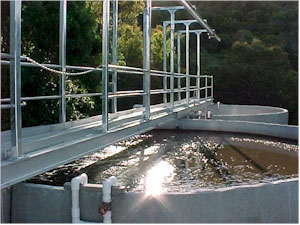

Municiple Sewage Treatment Plants.
Municipal sewage typically consists of wastewater from three sources: domestic, commercial and industrial. If discharged untreated, this wastewater, containing organics and solids, will consume oxygen and stress the aquatic community. Nutrients in sewage, such as phosphorus, can encourage algal growth when discharged to receiving waters. The algae are a problem for boaters and swimmers and reduce water clarity affecting fish habitat. Ammonia, on the other hand, can be acutely toxic to fish and is also found in sewage. Other concerns are toxic chemicals and metals which may have long-term harmful effects on the Great Lakes ecosystem.
